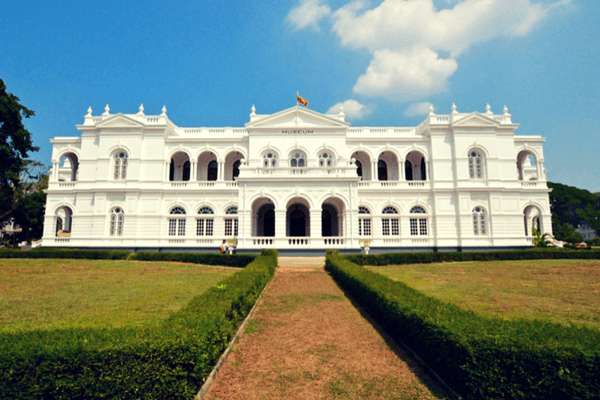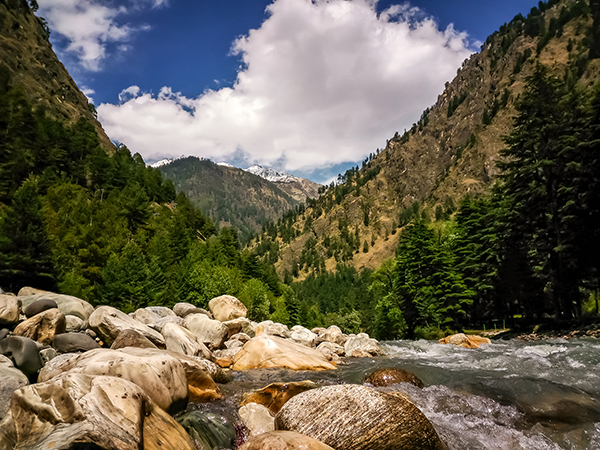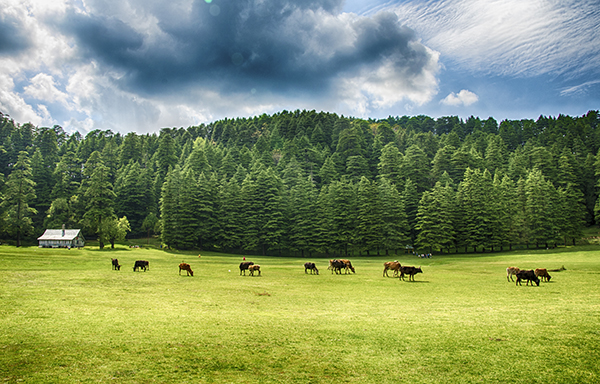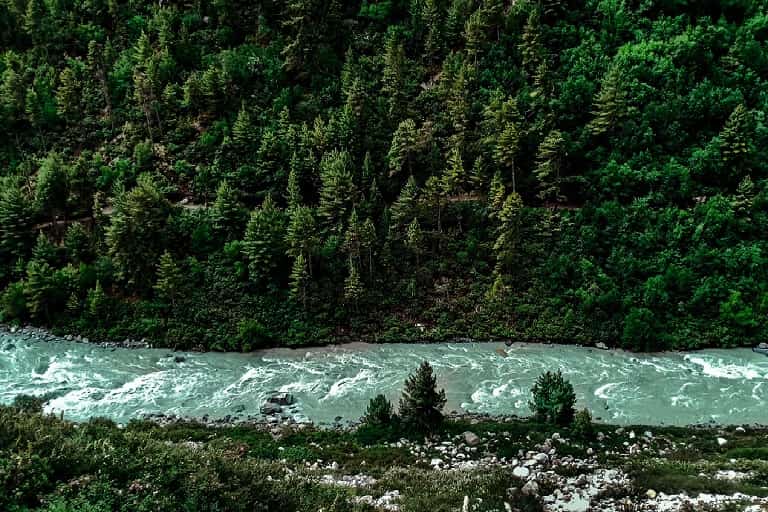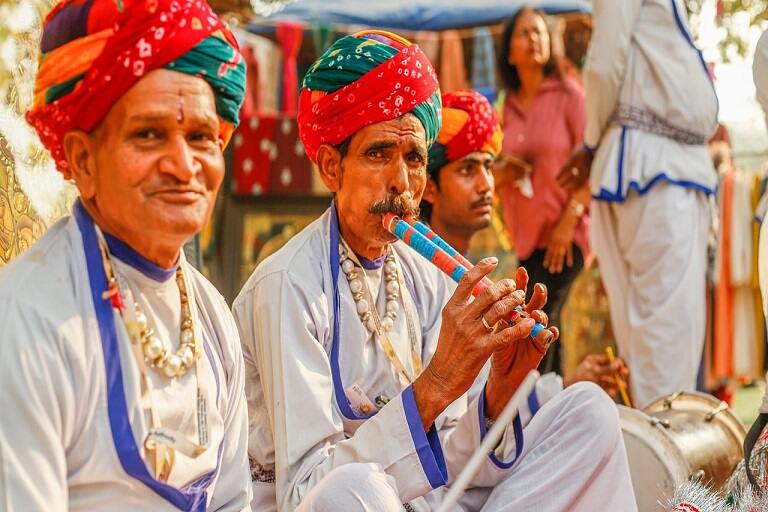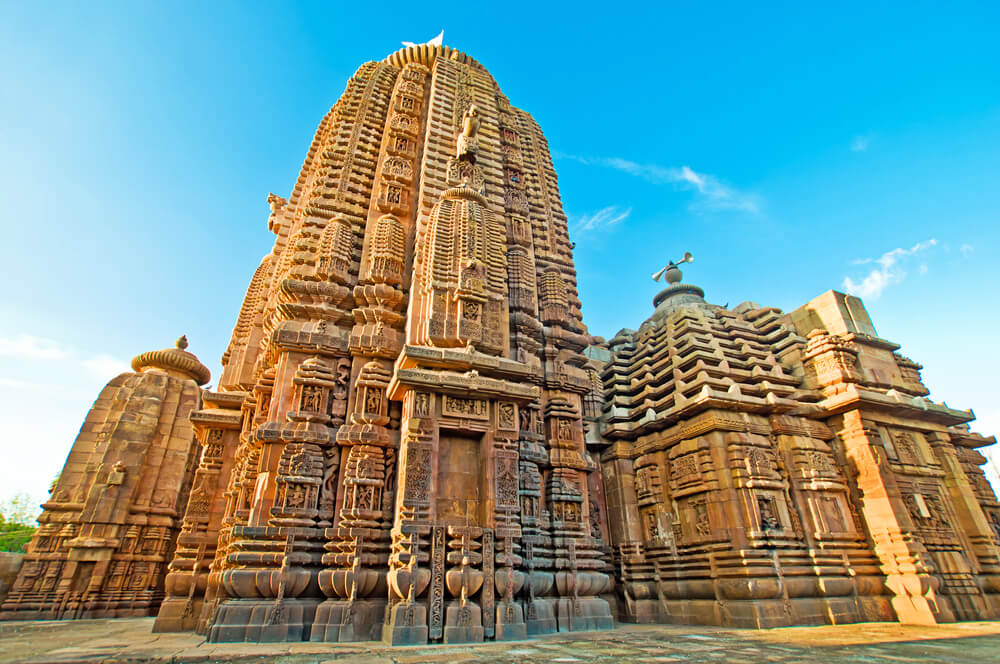
Explore Ancient India: Must-Visit Historical Places in Odisha
Table of contents
Odisha is one of the most historically and culturally rich states of India. The rich cultural heritage of Odisha is a testament to the country’s glorious past. This eastern state is home to some of the most prominent historical places in Odisha.
From age-old temples to rock-cut caves and ruins of mighty forts and architectures- it all exists in Odisha. Follow a detailed Odisha travel guide to explore the popular and hidden gems of the state as you uncover the heritage and glory of Odisha tourist attractions.
Introduction to Odisha’s Rich Historical and Cultural Legacy

Located on the eastern coast of India, there are numerous historical places in Odisha. The cultural and historical marvels range is a testament to an unbroken historical narrative that has existed in the state for centuries.
Whether it’s majestic Jain and Buddhist temples, forts, and ancient architecture, Odisha has it all. These structures, standing the test of time, are vibrant proofs of scholarship and storytelling. The Jagannath Temple and Konark Sun Temple are not only historical places, but also a cultural heritage of India, hosting numerous annual festivals.
Why Odisha is a Gateway to Ancient India’s Monuments?
The historical monuments in Odisha are often regarded as a gateway to the vibrant ancient India. Very few states in the country have such a collection of preserved archaeological sites. Holding the history of some of the leading dynasties like the Kalingas, Eastern Gangas and more, there are numerous historical places in Odisha from their reign, highlighting the stories of their political power and spiritual ideas.
The diverse Odisha tourist attractions, including Buddhist monasteries such as Ratnagiri, rock-cut Jain temples at Udayagiri, and medieval Vaishnavite temples, are preserved in Odisha. Each of these unique attractions is a testament to India’s rich heritage. While most of these are religious sites, they offer an insight into the rich cultural heritage of Odisha.
A Blend of Temples, Forts, and Ancient Architecture
Compared to other states in India, Odisha is most popular due to its perfect blend of top attractions. Most of the Odisha attractions strike a balance between temples, forts, and ancient architecture. There are historical places in Odisha, such as the coastal ports around Chandabali or Barbati Fort.
On the other hand, there are numerous temples in Odisha, ranging from Jagannath Puri Temple to Rajarani and Mukteshwar temples. Each of these temples showcases a unique kind of architecture that remains unmatched even in today’s generation. As for ancient architecture, some of the major Odisha tourist attractions include the ruins around Konark, the Dhaulagiri stupas, the Khandagiri Caves, and more. These historical places in Odisha feature inscriptions and iconography that tell aesthetic stories around the architectural structures.
Must-Visit Monuments in Odisha: Top Historical Sites
Ready to experience the true beauty of Odisha, highlighting the historic places? Here are some of the top historical Odisha tourist attractions that you must visit:
Konark Sun Temple

The Konark Sun Temple is one of the top 13th-century monuments in Odisha. Inspired by Kalinga-style architecture, this temple is dedicated to the Sun God. It has a colossal chariot design with 24 wheels, pulled by seven horses. As you take a walk around the temple, you’ll notice several carvings and inscriptions telling unique stories.
As a UNESCO World Heritage Site, it beautifully depicts contemporary life and activities. The temple’s unique design is said to represent Surya’s chariot. While 24 wheels symbolise the 24 fortnights of a year, the seven horses represent the days of the week.
- Fee: Free
- Timing: 5 AM to 11 PM
Jagannath Temple, Puri
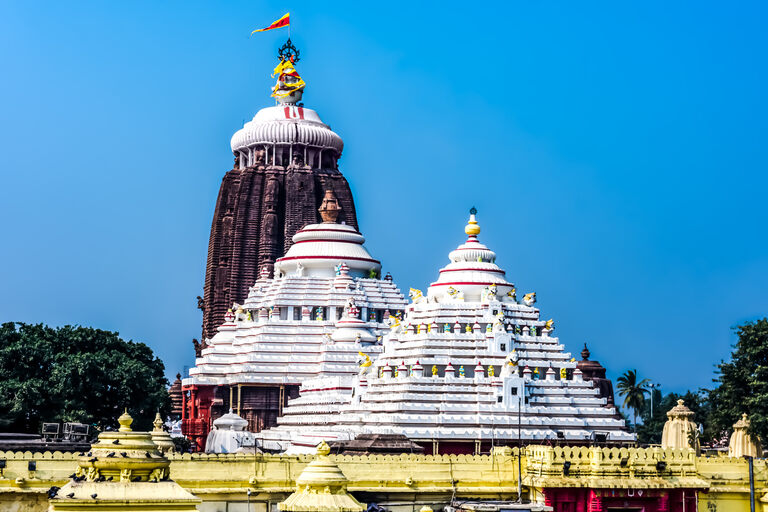
Jagannath Temple in Puri is one of the most famous temples in Odisha dedicated to Lord Jagannath. It is one of the Char Dham pilgrimages in Hindu culture. Built in the 12th century, this temple also follows the Kalinga-style architecture. The temple is very popular globally for its annual Rath Yatra festival.
The presiding deities at the temple are Lord Jagannath, Lord Balabhadra and Goddess Subhadra. Only Hindus are allowed to enter this temple. One of the most unique features of this temple is that the flag on top of it always flows in the opposite direction of the wind.
- Fee: Free
- Timing: 4:30 AM to 11 PM
Lingaraj Temple, Bhubaneswar

The Lingaraj Temple is one of the oldest Hindu temples in Odisha. The temple brings the perfect blend of Shaivism and Vaishnavism. This temple attracts numerous devotees from all across the country, especially during Shivratri.
The main temple is dedicated to Lingaraj, also known as Harihara, a form of Shiva and Vishnu. The temple features a Kalinga-style architecture and comprises four main parts: the sanctum, assembly hall, festival hall, and hall of offerings. It is believed that the Somvamsi dynasty built this temple, and later the Ganga Kings made some additions to it.
- Fee: Free
- Timing: 6 AM to 12:30 PM; 3:30 PM to 9 PM
Udayagiri and Khandagiri Caves, Bhubaneswar
One of the most important historical places in Odisha that you must visit is the Udayagiri and Khandagiri Caves in Bhubaneswar. The ancient rock-cut complex is renowned for its historical and archaeological significance.
The caves are as old as the 2nd century BCE, built under the reign of King Kharavela of the Kalinga dynasty. The Udayagiri and Khandagiri Caves served as residential spaces for Jain monks. These caves are renowned for their intricate sculptures, carvings, and inscriptions, which provide insight into the past.
- Fee: INR 15 (Indians), INR 200 (foreign tourists)
- Timing: 8 AM to 5 PM
Barabati Fort, Cuttack
Barbati Fort is one of the must-visit historical places in Odisha. Located in the heart of Cuttack, the Barbati Fort is a prime example of Odia architecture and military power. Today, the remains of Barbati Fort stand tall, matching the energy of Barbati Stadium.
The Barbati Fort was built in 987 CE by Marakata Keshari of the Somvanshi dynasty. The ruins of the fort feature an earthen mound, a nine-storied palace, a moat, and a gate. The fort is a true reflection of Odisha’s rich cultural heritage.
- Fee: Free
- Timing: 6 AM to 6 PM
Hidden Gems: Lesser-Known Monuments in Odisha You Should Explore
A significant portion of Odisha remains unexplored or is lesser known among the people. These historical places in Odisha hold considerable importance in the culture and traditions of ancient India. A visit to these lesser-known monuments in Odisha can provide a wealth of knowledge about the country’s rich history.
Below are some of the hidden Odisha attractions that you must not miss out on visiting:
Rajarani Temple, Bhubaneswar
Built around the 11th century, Rajarani Temple is one of the most prominent temples in Odisha. This architectural marvel is the leading example of Kalinga-style architecture. Although there’s no presiding deity at the temple currently, it is believed that the temple was dedicated to Lord Shiva. Because it does not have a deity, it is also classified as a Saivite temple.
Rajarani Temple derives its name from its composition of red and yellow sandstone. This unique combination is known as Rajarani in the local language. Several locals also claim this to be the Love Temple, as the temple walls are sculpted with the carvings of numerous couples. You must visit this place between January and February to experience the three-day Rajarani Music festival.
- Fees: INR 5 (Indian nationals), INR 250 (foreign travellers). Children below the age of 15 don’t require tickets.
- Timing: 6:30 AM to 7:30 PM
Dhenkanal Palace, Dhenkanal
Dhenkanal Palace is one of the largest apartment complexes, featuring courts and gardens, situated on the gradual slopes of the Garhjat Hills. Built during the latter part of the 19th century, Dhenkanal Palace was the residence of the Raja of Dhenkanal and his family. As one of the leading historical places in Odisha, Dhenkanal Palace still retains the old-worldly historical and colonial charm.
Dhenkanal Palace has now been converted into a homestay that can accommodate up to 24 guests. The guests can stop by the library of the Raja of Dhenkanal to learn more about the rich cultural heritage of Odisha. You can plan your visit and stay at Dhenkanal Palace during late autumn and winter, sometime between October and March.
- Fee: depends on your booking amount
- Timing: 10 AM to 5 PM
Chausathi Yogini Temple, Hirapur
The Chausath Yogini Temple in Hirapur is one of the most prominent temples in Odisha, situated approximately 20 km from Bhubaneswar. It is one of the four surviving shrines dedicated to the Chausath Yogini, with two located in Madhya Pradesh and one in the Bolangir district of Odisha.
The main deity of this temple is the Goddess Mahamaya, one of the Chausath Yoginis (64). Queen Heeradevi of the Bhaumakar dynasty built the temple in the 9th century AD. The temple underwent restoration by renowned historian Kedarnath Mahapatra in 1953. Daily prayers are offered at the temple, where the five elements of nature —sky, water, earth, fire, and ether — are worshipped. You must visit the temple during December to witness the glory of Chausathi Yogini Mahotsav.
- Fee: Free
- Timing: 6 AM to 7 PM
Why Odisha is a Treasure Trove of Ancient Indian Monuments?
The historical places in Odisha make it a treasure trove for Indian architecture. The architectural brilliance and cultural legacy are what make it one of the best places to visit in India.
Some of the key reasons why the monuments in Odisha are a testament to ancient Indian architecture are as follows:
Rich Architectural Diversity in Odisha
The temples in Odisha showcase a blend of historical information and traditional temple-building practices. Some of these historical monuments in Odisha feature Kalinga-style architecture, characterised by their high shikharas and intricate stone carvings. The Konark Sun Temple is a prime example of this.
Other Odisha tourist attractions that highlight the rich architectural diversity include the Jagannath Puri Temple, Rajarani Temple, Chausath Yogini Temple, Mukteshwar Temple, and Lingaraj Temple. Each of these temples follows a Kalinga-style architecture, but there’s a significant difference between them in terms of layout, sculptures, and carvings.
Cultural Significance of Monuments in Odisha
The cultural heritage of Odisha often finds its roots in the region’s architectural legacy. Not only do these places showcase artistic value through their carvings, but they also embody high philosophical, spiritual, and societal significance. The inscriptions at the Udayagiri and Khandagiri Caves highlight Odisha’s role in promoting literature.
Latagiri, Udayagiri, and Ratnagiri have numerous Buddhist Complexes housing religious stupas, monasteries, and shrines. The Dhauli Hill monuments show the story of the Kalinga War. On the other hand, the Shanti Stupa highlights the philosophical evolution of King Ashoka after the war. Each of these elements, highlighting the stories of different religions, illustrates the importance of culture in Odisha.
Preservation Efforts and Heritage Tourism in Odisha
The Odisha government is making efforts to conserve historical places in Odisha, in collaboration with institutions such as the Archaeological Survey of India (ASI). Conservation efforts to promote heritage tourism were conducted at Konark Sun Temple and Kapilesvara Temple.
Some of the top temples in Odisha feature experts who guide visitors through the history and cultural significance of these sites. The conservation efforts, with a commitment to safeguarding the legacy, make these historical places in India more accessible with improved infrastructure.
Over the years, Odisha has taken the front seat with its top tourist attractions. There are still numerous Odisha tourist attractions to explore, ranging from small temples to massive mountains, dams, and much more. Considering Odisha’s cultural diversity, the same is observed in the ancient Indian monuments.
FAQs About Visiting Monuments in Odisha
1.What is the best time to visit Odisha for monument tours?
The months of October to March are the best time to visit historical places in Odisha. The winter months are generally cooler, offering several opportunities for sightseeing.
2.Are there guided tours available for Odisha’s monuments?
Yes, numerous guided tours are available for monuments in Odisha. Some of the top guided tours are available at the Konark Sun Temple, Puri, and more. You can choose from private tours or group tours.
3.Do I need to book tickets in advance for these monuments?
Yes, it’s recommended to book tickets in advance for some historical places in India, especially during peak seasons or holidays. However, many people do not opt for booking. Whether you want to buy the ticket or not is based on your preference.
4.What are the most accessible monuments for tourists in Odisha?
Some of the top historical monuments in Odisha to visit include the Konark Sun Temple, Barbati Fort in Cuttack, Khandagiri Caves, Chausath Yogini Temple, Lingaraj Temple, Humaduma, and Ranipur Jharial.
5.Are there accommodations near these monuments in Odisha?
Yes, several accommodation options are available near historical places in Odisha. If you’re planning to visit these destinations during the peak season, it is recommended that you book your accommodation in advance.
Table of contents
Trending blogs for you
 18002099100
18002099100



